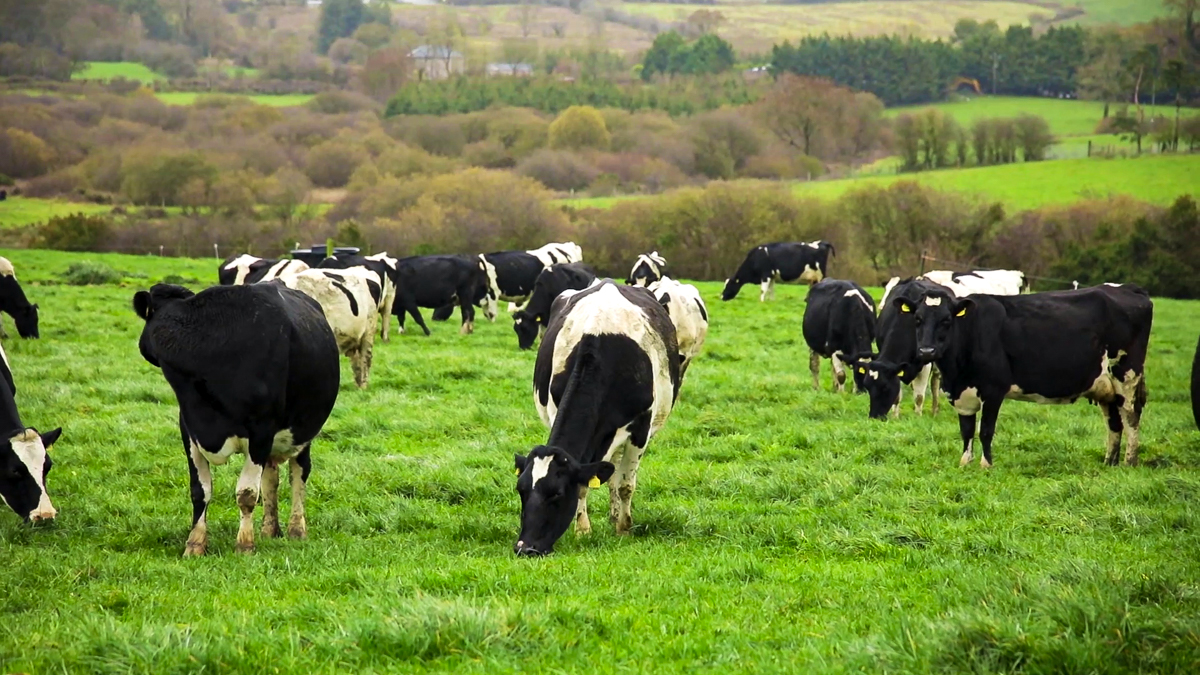Although Irish dairy farmers are reportedly the most environmentally sustainable food producers in the world, agriculture accounts for 35% of our greenhouse gas (GHG) emissions.
With the European Union (EU) setting us significant targets, it makes it necessary to achieve GHG reductions.
One tool brought up time and time again as a way of improving efficiency, profitability and lowering GHG emissions, is the Economic Breeding Index (EBI).
Research by Teagasc has illustrated that for each attentional €10 in herd EBI, there is a gain of €20 in additional net profit/cow/year, while also leading to a 3% reduction in carbon footprint.
Martin Raftice, a lecturer at Kildalton Agricultural College, explains the advantages of improving EBI both for environmental and economic reasons and why GHG are of major concern in agriculture.
Emissions from agriculture include:
- Methane (CH4);
- Nitrogen (N20);
- Carbon Dioxide (CO2).
Methane is the largest contributor with 64% of the total. At farm level, Irish dairy farmers are using EBI to breed more efficient, profitable cows.
The EBI allows farmers to:
- Deliver higher milk solids from grazed grass;
- Improve dairy cow fertility which leads to longer lactations and reduces replacement rates.

Cow comparison
Martin compared the performance of two cows within the Kildalton dairy herd, cow number 3098 (a Jersey crossbred cow) and cow number 3102 (a Holstein Friesian cow), both being third calvers.
Martin stated: ”Cow number 3098 produced 7,684kg of milk in her second lactation, with cow number 3102 producing almost 2,000 less kg of milk.
”3098 also produced higher levels of solids during the lactation with 639kg compared to 444kg for 3102.
”3102 is producing the national average milk solids making her a very good cow, with 3098 being an exceptionally good cow.”
Martin went on to say: ”3098 is a cow with the type of genetics that we are trying to obtain more of.”

How does it work?
According to the Irish Cattle Breeding Federation (ICBF), the EBI has the capacity to reduce dairy emissions in a number of ways.
Firstly, it outlined that by improving fertility, the calving interval and replacement rate is reduced, thus lowering methane emissions per unit of product.
In addition, improving the fertility of the cows will help to achieve a more compact calving pattern, in turn maximising the proportion of grazed grass in the diet.
While maximising the amount of grazed grass in the cow’s diet will reduce the need for bought-in feed on farm, this in turn reduces GHG emissions due to less imported feed – improving farm profitability as a result of reduced costs and greater animal performance.
It is also noted that fertility improvements contribute to the age at first calving; resulting in more heifers calving down at the optimum age.
Secondly, by increasing milk yield and composition, this enhances the efficiency of production which then decreases emissions per unit of product.
Thirdly, improved survival increases the longevity of cows in the herd, and so methane emissions per unit of product are reduced.
Finally, improved health reduces the incidence of disease, leading to higher production levels and lower replacement rates – thereby lowering GHG emissions.
The level of feed intake is an important element influencing methane production – with smaller cows consuming less feed than larger cows.
The maintenance sub-index in the EBI captures cow size using cow liveweight. This can be used to breed a more carbon efficient cow that produces high kgs of milk solids.
